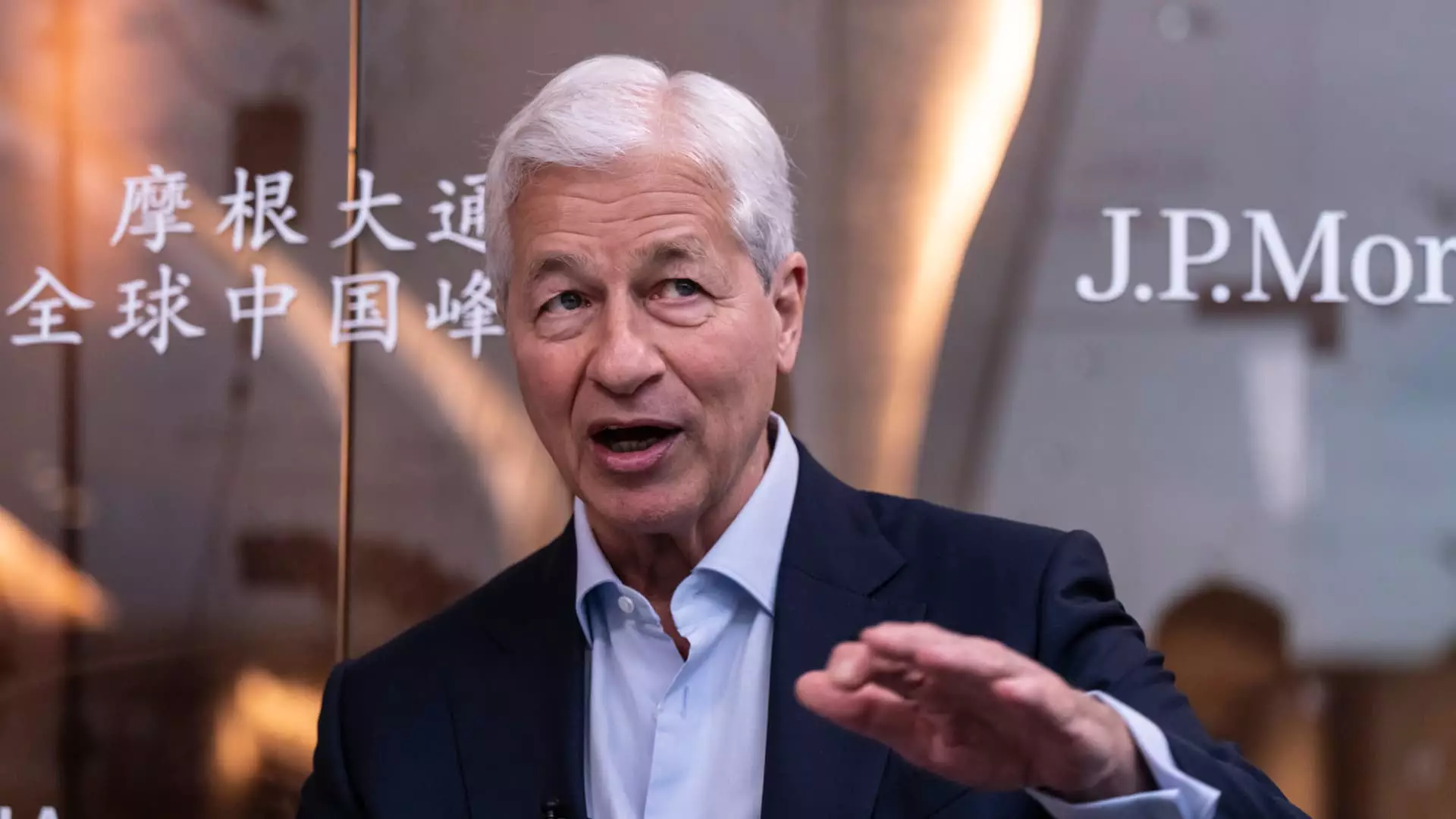Once regarded as a negligent contender in the online investing arena, JPMorgan Chase is now positioning itself as a formidable player. The major financial institution recently announced groundbreaking tools designed to facilitate research and transactions in bonds and brokered certificates of deposits (CDs) via its mobile application. This tactical shift signifies not just an upgrade in technology, but a redirection in strategy aimed at seizing market relevance. As someone who has followed the evolution of banking and finance for quite some time, it is both exhilarating and refreshing to see a giant like JPMorgan not merely playing catch-up but aspiring to set the standard for online investment.
Paul Vienick, who heads online investing at JPMorgan’s wealth management unit, candidly admitted that the goal was to create a seamless experience for those keen on fixed-income products. His emphasis on simplicity reflects a broader industry trend where user experience is paramount. Let’s not forget that in today’s fast-paced world, even money matters require speed and efficiency. With more customization options and tools to compare bond yields directly in the banking app clients already trust, JPMorgan is increasingly narrowing the gap with online brokerages that have long dominated the space.
Investing Ambitions: A Tough Climb Ahead
Despite these ambitions, JPMorgan’s heft pales in comparison to industry titans like Charles Schwab, Fidelity, and E-Trade. The perception of being “a latecomer” lingers. Even though they recently surpassed $100 billion in assets under management, that figure falls dramatically short when compared to their more established competitors. This rigidity can only be attributed to a lack of foresight in recognizing the growing demand for self-directed investment options.
The journey hasn’t been devoid of challenges. In 2018, JPMorgan ventured into the realm of free trading with a service known as “You Invest.” Unfortunately, this initiative failed to resonate meaningfully with investors, leading to a necessary pivot in branding and strategic focus. James Dimon’s candid admission that the product wasn’t “very good” at a 2021 financial conference underscored this critical pivot point. This blunt honesty is rather refreshing in an industry often clouded by corporate jargon. As a customer, one might find solace in such candidness; it’s better to be uncomfortably transparent than comfortably complacent.
Acquisition Strategy: A New Frontier for Wealth Management
Part of the rejuvenation strategy for JPMorgan has involved attracting seasoned talent, such as Vienick, who brings extensive experience from traditional investment firms. Together with the bank’s recent acquisition of First Republic, this approach not only aims to court affluent Americans but also enhances their grip on a market they have yet to fully penetrate. Bizarrely, despite holding banking relationships with half of the country’s affluent households, JPMorgan claims only a 10% share of their investment dollars. The opportunities here are staggering, yet the firm needs a well-thought-out strategy to adequately tap into this predominantly untapped reservoir of wealth.
Furthermore, they are racing to improve user experience for the budding investor: a demographic that trades stocks and researches investment opportunities multiple times a month. As the weight of financial services increasingly shifts to technology-driven solutions, it’s crucial for JPMorgan to not only match but exceed the expectations set by competitor platforms. This shift may define their relevance in the market over the coming years, but success here is not guaranteed.
A Unified Financial Ecosystem: The Ambitious Vision
JPMorgan’s strategy doesn’t merely rest on acquiring new customers; it also aims for deeper engagement with existing ones. They are rolling out incentives, like up to $700 bonuses for transferring funds to their self-directed platform, blending various aspects of banking into a seamless financial ecosystem. The vision here is not just about bolstering engagement but also creating a holistic view of customers’ financial lives. Instantaneous transfers between accounts and integrated account monitoring are essential features that could encourage financial consolidation within the firm.
As someone who believes in the potential of technology to enhance financial literacy and investment opportunities, I find JPMorgan’s proactive stance commendable. Their ambition to make the self-directed business a trillion-dollar enterprise is audacious yet achievable with the right tools and strategies. However, overcoming the stigma of being “behind the curve” is a daunting task, requiring relentless innovation and a deep understanding of client needs.
Through relentless efforts to innovate and adapt, JPMorgan Chase is stepping into the ring to claim its position among the giants of online brokerage services. The road may be steep, but with the immense resources at its disposal, there’s every indication that they could soon make a significant impact. In this spirited chase for relevance amidst soaring competition, it’s imperative that they stay true to their promise of simplicity and efficiency for both seasoned and novice investors alike. While the financial landscape is ever-changing, one can only hope that JPMorgan continues on this promising trajectory.

